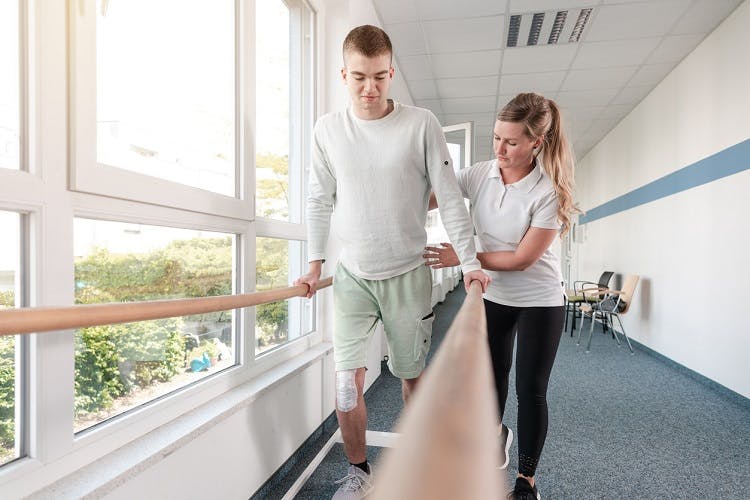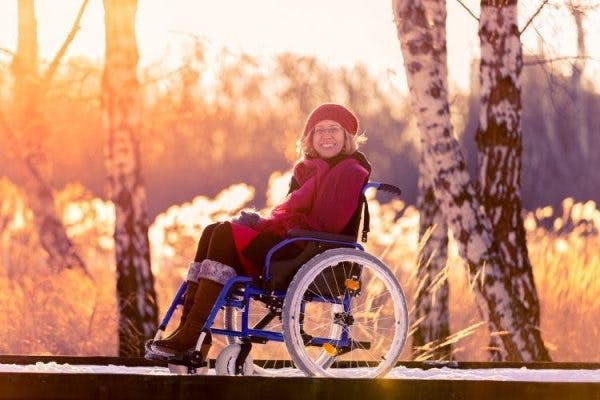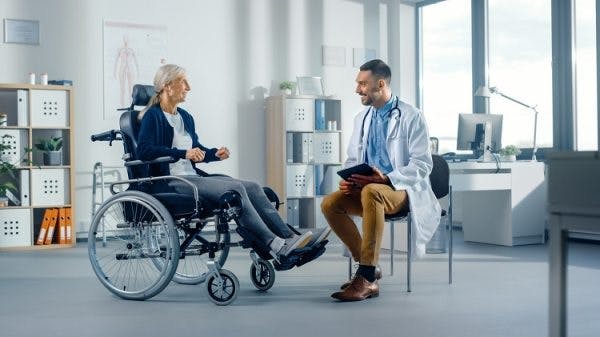The best leg exercises for spinal cord injury patients will help promote circulation, minimize muscle atrophy, and maintain range of motion.
Due to paralysis after a spinal cord injury, many individuals become less physically active. When you don’t move regularly, your muscles shrink, joints tighten up, and blood starts to pool in your legs.
This article will share 7 leg exercises that spinal cord injury patients can practice to optimize their health and prevent secondary complications.
Helpful Leg Exercises for Spinal Cord Injury
While every spinal cord injury will result in different functional outcomes, all SCI patients must practice leg exercises to maintain their health.
Even if you are completely paralyzed in the legs and cannot voluntarily move them, exercise is essential to minimize the risk of secondary complications like premature aging, blood clotting, and pain.
Those with more severe paralysis in the legs should practice passive range of motion exercises with a physical therapist or caregiver. In contrast, those with some control in the legs should try to perform these leg exercises on their own and adjust as needed.
Want 15 pages of SCI recovery exercises in PDF form? Click here to download our free SCI Rehab Exercise ebook now (link opens a pop up for uninterrupted reading)
Without further ado, let’s get into the exercises:
1. Range of Motion (ROM) Exercises
Range of motion leg exercises ensure that you’re moving your joints to their full capacity. This will help prevent stiffness and promote circulation.
These exercises are low impact and can be practiced regardless of how much control you have over your legs.
If you have very limited or no control in your legs, practice range of motion exercises passively. Passive exercise involves having your PT or caregiver move your body for you while you focus on the movements.
The video below demonstrates how to perform range of motion exercises. ROM exercises for the legs start at 2:32. To help you better understand the terminology used in the video, here’s a quick overview:
- Flexion: to bend your limb/joint
- Extension: to straighten out
- Adduction: to move in towards the center of your body
- Abduction: to move away from the center of your body
- Elevation: to raise
- Depression: to lower
- Plantar: the bottom of your foot
- Dorsal: the upper side
If you have some control in the legs, try to practice range of motion exercises independently. Actively repeating a weakened movement can help stimulate the spinal cord to adapt and rewire itself.
2. Stretches
Spinal cord injury patients need to stretch their legs to lengthen tight muscles and maintain range of motion in the hips, knees, and ankles.
The video below will demonstrate how individuals with normal arm functions can stretch their legs after a spinal cord injury. All you will need is a strap or resistance band.
Make sure to stretch slowly and gradually. Many spinal cord injury patients lose sensation below their level of injury, which increases their risk of further injury. Do not force anything beyond your body’s natural resistance.
3. Straight Leg Raises
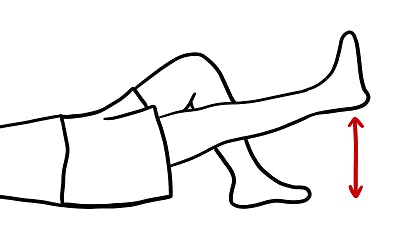
Straight leg raises will help incomplete spinal cord injury patients develop their quads and hip flexors.
Lay on a mat with one knee bent and the other straightened. The toes of your straightened leg should be pointed up towards the ceiling.
Lift the straightened leg in the air as high as you can and gently bring it down. Perform 10 times and then switch sides.
Keeping one leg bent will help stabilize the body. To make this leg exercise more challenging, straighten both legs and lift them at the same time.
4. Seated Marching
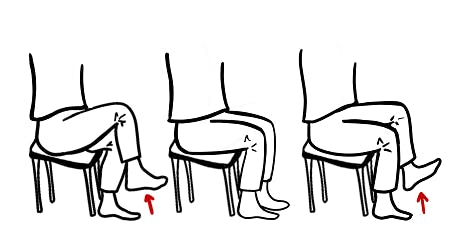
Seated marching is a great leg exercise for incomplete spinal cord injury patients who still have some movement, because it allows them to practice walking motions without placing pressure on the joints.
To get started, sit at the edge of your seat with both feet planted on the ground. Then, alternate lifting your knees one at a time.
5. Knee Squeezes
This next leg exercise will help strengthen the muscles in your inner thighs (hip adductors), which helps promote hip stability and overall balance.
Sit at the edge of your seat. Then, place a small object (like a cushion or ball) in between your knees and press your knees together to keep the object from falling. Hold for 10-20 seconds.
The smaller the object, the more challenging this leg exercise will be.
6. Heel Raises
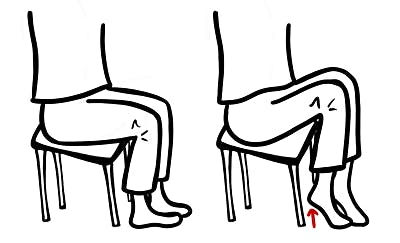
Heel raises will help spinal cord injury patients practice shifting their weight from their heels to the balls of the feet. This mimics the movements made when taking steps.
Sit at the edge of your seat with feet planted on the floor. Then, slowly lift the heels. You should feel your calves tighten and ankles extend.
To make this leg exercise more challenging, spinal cord injury patients should try it standing up with supervision, if they have the ability to do so. This will increase weight-bearing through the legs and help develop balance skills.
7. Gait Training
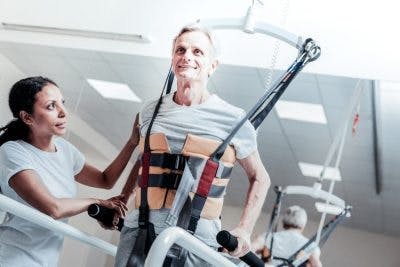
Once spinal cord injury patients develop enough strength and mobility in their legs, they may begin gait training. Gait training is a type of physical therapy that specifically focuses on learning how to walk again.
Three of the most popular gait training methods include:
- Weight-bearing treadmill training involves wearing a harness that supports you for balance and reduces the amount of weight placed on the legs. By reducing strain on the joints, individuals with paraplegia can focus on developing proper walking form.
- Aquatic therapy involves practicing walking exercises in a pool. The buoyant force of water will make you feel much lighter while the resistance of water will help strengthen the muscles.
- Overground training involves using assistive devices like walkers, canes, and parallel bars to help you stay balanced. This type of gait training will give you the most realistic feel for walking again because it requires you to bear your full body weight.
Many spinal cord injury patients recover their ability to walk through intensive gait training because it is task-specific and emphasizes repetition. The consistent stimulation helps promote neurological adaptations in the spinal cord.
Leg Exercises for Spinal Cord Injury: Key Points
Regardless of your functional abilities after a spinal cord injury, it’s essential to practice some form of leg exercises to maintain your overall health and minimize the risk of secondary complications.
Leg exercises do not have to be strenuous. As long as you’re moving your legs, you can promote circulation and reduce stiffness.
We hope you try some of these leg exercises for yourself! Every spinal cord injury is unique, so make sure to adjust the exercises to better suit your abilities.
Photo credits: iStock/kzenon/yacobchuk

